#eastern honey bee
Photo
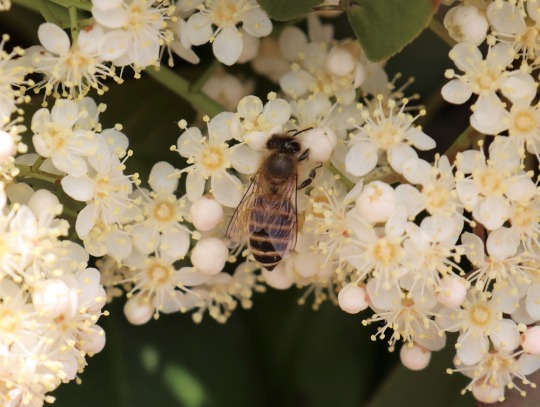
カナメモチ(アカメモチ)で吸蜜するニホンミツバチ(4月18日)
#Apis cerana#eastern honey bee#Asiatic honey bee#Asian honey bee#Apis cerana japonica#bee#pszczoła#pszczoła wschodnia#Photinia glabra#Japanese photinia#flowers#kwiaty#owady#insects#japan
31 notes
·
View notes
Note
Could you do a honey themed dragon in a Honeypot?

#79 - 蜂蜜 (fēngmì / honey) - A friend to bees and chamomile teas! 🍯🐝💛
#ask and you shall receive :3#honeii-puff#daily dragon drawing#art#art challenge#artists on tumblr#chinese artist#dragon#dragon a day#dragon art#dragon oc#dragons#daily drawing#daily dragon#chinese dragon#drawing challenge#drawing every day#drawing#illustration#year of the dragon#fantasy creature#creature design#zodiac#eastern dragon#dragon illustration#honey#honey dragon#honeypot#honey bee
1K notes
·
View notes
Text

Beeutiful butterfly
#nature#photography#nature photography#flowers#floral#summer#naturecore#summer flowers#pollinator#pollinators#butterflies#butterfly#bee#bees#anise hyssop#giant hyssops#eastern tiger swallowtail#swallowtail butterflies#western honey bee#honey bees#honey bee
38 notes
·
View notes
Text









Nice long walk this morning in the cooler weather. It's started to feel a bit like fall. Not temperature wise, but in terms of the animals and plants.
#birds of tumblr#wildlife photography#wild animals#wildlife pictures#birds of north america#birdwatching#animal photography#wild birds#toronto#nature#snail#bee#sleeping bee#hummingbird#eastern grey squirrel#squirrel#wildlife#animal#birds#house sparrow#sparrows#american goldfinch#western honey bee#black walnut#flower photography#white bike#memorial bike
15 notes
·
View notes
Text


#bee#honey bee#eastern tiger swallowtail#swallowtail#butterfly#nature#beauty#photography#nature photography#my photo#life
4 notes
·
View notes
Text
It's Eastern prickly pear time!

These flowers are so bright the seem luminescent. Like little suns in my garden.☀️



As you can see, the honey bees love them too🐝

I have 4 groupings of them and they make the whole garden glow
0 notes
Text
so many of us haven't seen it
we don't encounter it, we can't imagine it, we can't get out of the tomb of apathy because we haven't seen the wonders just beyond their line of sight
I talk about this all the time, but it's because I think about it all the time
There are likely thousands of plants native to the area you live in, and chances are you have never even seen most of them, in your entire life.
Not even rare orchids that only bloom at midnight on a blood moon or some shit—regular flowers. Weeds. They have been systematically eliminated from every single place you ever set foot in, and you have to have a special hobby or line of work to ever even rest your eyes upon the flowers that used to bloom for no one on every hill, or in every valley, or beside every stream
There are a few hundred birds that live where I live. I have never seen most of them before. I have never seen a Kentucky Warbler, and I have lived in Kentucky for what...twenty years?
I have never seen a rosy maple moth. When I saw one on the internet, I didn't even think it was real.
I've become a deeply weird person over the past couple years. Tasting even a little bit of the Wonders changes you. I wouldn't have thought blue bees were real, or the fantastically rainbow-colored dogbane beetles.
I have seen the world beyond the wasteland, and that glimpse makes you crazy.
You or I may have never seen a truly mature tree. A fraction of a percent of the old growth forest of the Eastern USA remains. Once there were tulip poplars over 6 feet in diameter and sycamores well over 10 feet in diameter. Only a few remain, in secret locations. Imagine walking through a forest where the tree trunks are over 3-4 feet wide.
The forest where I work is 100 years old. That's a baby forest.
Knowing that, being aware of that, it's maddening.
Central Kentucky has disproportionately few endemic plants. Almost none. Central Kentucky was the first area west of the Appalachians settled by European colonizers. The Bluegrass was once described as having the most peculiar plant life anywhere in the East, but now, there are no species known that are unique to that area.
Colonization destroyed the canebrakes. (Did you know that we had vast forests of bamboo full of carnivorous plants?) The bamboo is barely hanging on. It destroyed the sycamores so enormous you could use the hollow center of one as a stable for animals. It introduced invasive grasses to feed cattle and horses. It destroyed the rich lush topsoil. Most of the ancient oaks were cut down or died when housing developments were built on top of their roots.
What happened to the endemic species, never recorded in books of herbs, never sketched by a European naturalist.
Either gone forever...or hiding in a sinkhole on a backroad somewhere, not even yet discovered.
So much has been lost for eternity. So much still could be lost.
Some days it's hard not to wail and scream. There are herbicides in your drinking water. When you spread honey on toast, you likely also spread neonicotinoid pesticides, which testing has confirmed to be present in something like 45% of honey. In many areas, insects are immersed in the presence of chemicals designed to kill them in every drop of water, every leaf, every square inch of soil.
When games, animations, and illustrations envision the outdoors, they cover the ground with a short, uniform carpet of green, because that is what we see, no matter where we go: turfgrass cut by a lawn mower. Where I live, there are no natural environments that resemble this, remotely. The closest thing we have to turf-forming grass is our wealth of native sedges, most of which are rare or endangered.
I talked to a man who had devoted his life to studying the American bamboo, Arundinaria gigantea, and he had never seen a canebrake larger than 200x500 feet. Canebrakes once covered ten million acres, and now the bamboo exists in short, straggly clumps instead of dense bamboo forests up to 40 feet tall.
I want to cry and scream. The grief will tear me to pieces. I live in a post-apocalyptic wasteland, surrounded by people who can't even grieve, because they have been so completely severed from everything that was lost that they don't even know it was real.
It hurts. It hurts, and we have to live with it. It hurts, and the grief is all-consuming.
There is the agony, and there are the Wonders. Both are true at the same time. It is because nothing around us is standing still; everything in nature is always moving, iterating, becoming. Something is pulling and nudging at our species, urging us to move, to iterate, to become.
So much has been lost. Even more is not lost.
The trees, the bamboo, the sedges, the Kentucky warblers and rosy maple moths.
They are not lost. We are lost.
This is the hard part. The grief is hard, but this is somehow harder for us. We are lost, and it is time to come home.
Not to a physical place, but to a way of living: interconnected, mutualistic, interdependent. Symbiosis. In the forest, no one is separate from anyone else, everyone is linked and dependent on the community. Trees help each other, they support each other, they protect and shelter and feed one another and all living things, and together they are a forest. I don't really consider myself religious, but I have to reserve something in my head for how it felt to realize what Forest was.
When I noticed the little plants popping up in the sidewalk cracks and gravel paths, the tough weeds holding on in the lawns and pavement, something in my brain began to change dramatically and permanently.
They're still here. The trees. Even in the pavement and lawns. The dandelions have come, adapting rapidly, helping the bees hold on. The wildflower seeds are still sprouting in this depleted ground. Waiting for us to recognize them. Life is everywhere. The Forest is everywhere. It felt like they were waiting. We're here. We have not abandoned you. We are resilience, persistence, survival, adaptation. This is not death. This is Chaos. Come home. Come home. Come home.
I saved little plants from the roadside and tended them in plastic cups. I didn't think it would work. I don't know why I tried. I was acting as something bigger than only myself, responding to a call that moves throughout all of nature. But they survived, and growing and tending to my little plants and trees, I—understood.
I don't know if I believe in God, but I believe in Something, whatever it was that seemed to whisper like a secret: Welcome home, Caretaker.
And honestly, truth shone through then from relics of religion I hadn't touched in ages; God put Adam in a garden, not a suburb, a mall, or a Walmart. This is who you are. Not a Consumer, but a Caretaker.
And when the threat of the Flood loomed, God told Noah to start building a fucking boat.
In ecology, the plants we know as "weeds" are pioneer species: the first species to return to an area after a natural disaster or mass extinction. They survive in the harshest conditions, and prepare the land for regeneration. This is who you must become.
Look to the Dandelion—in just a few hundred years on this continent, Dandelion has risen to the highest calling of a Weed: first survive where the others can't, and then help the others survive. If the human species is to survive, you must be a weed species. You must adapt relentlessly, resist eradication, and protect and nurture other life forms by your very nature. You must be tough as nails, and make the world a gentler place through your survival.
Have you heard the saying that grief is love with no place to go?
That's the hard part.
We must grieve, but it is not yet time to grieve. It is time to love.
2K notes
·
View notes
Text
It is still wild to me that people will claim that "Israel is stealing palestinian food/cusine and calling it Israeli"
Cause like, most countries have food taken from other cultures as part of their cusine.
Like i don't see anyone yellings at New Zealand for eating fish and chips and calling it a Kiwi Classic even though it originated in Portugal. Suprised that I didn't say Britian? Yeah that because it didn't orignate in Britian despite most people thinking it did.
The reason why there is so much middle eastern cuisine in Israel which is considered Israeli cusine is because A) Mizrahim literally were forced out of the middle eastern countries they resided in by the government of said middle eastern countries and were forced to go to Israel and took their food and cooking with them, B) Israel isn't made up of only jews, C) a lot of palestinian cuisine are foods which did not originate in Palestine and instead come from other middle east countries (which is valid and still palestinian cuisine) and D) its almost like countries also use ingredients that are around them in their cooking and don't only eat imported food.
Like Manuka is used in NZ as its native to here. Its wood chips are used to smoke meat and you get manuka honey from bees making honey from manuka pollen.
If Palestine gets to have food which did not originate in Palestine be labeled as Palestinian cusine, then so does Israel. Either all countries can have food which didn't orignate from that country as their cusine or no country can. Israel should not be the exception.
158 notes
·
View notes
Text

Apparently, Rhododendron honey is hallucinogenic. "Mad honey" originated in the Black Sea region of Eastern Turkey where bees pollinate fields of rhododendron flowers. The honey that results is the most expensive in the world at $166 per pound and when consumed, can cause light-headedness, feelings of euphoria and even hallucinations. Consume too much, however, and mad honey can cause severe sickness, including vomiting, diarrhea, loss of consciousness, seizures and although rare, can be fatal.
313 notes
·
View notes
Text

How eating ‘mad honey’ cost Pompey the Great 1,000 soldiers. From licking toads to pouring vodka into the eyes (don’t try these at home), folks have invented some crazy ways to catch a buzz, but one way just might be the sweetest (but still stupid). It’s called “mad honey” and even though most people have probably never heard of it, this honey with hallucinogenic properties has been around since ancient times. Texas A&M University Professor of Anthropology Vaughn Bryant, one of the world’s foremost honey experts, says mad honey has a fascinating history, including its use in war. Mad honey originated in the Black Sea region of Eastern Turkey where bees pollinate fields of rhododendron flowers, some species of which have a natural neurotoxin called grayanotoxin in their nectars. The honey that results is the most expensive in the world at $166 per pound, notes Bryant, and when consumed, can cause light-headedness, feelings of euphoria and even hallucinations.
125 notes
·
View notes
Text
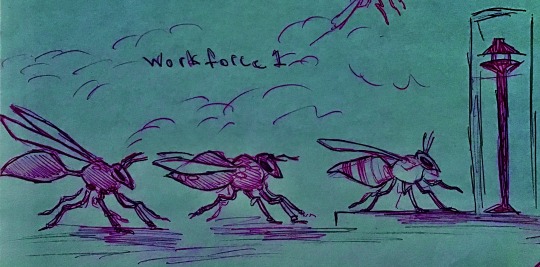
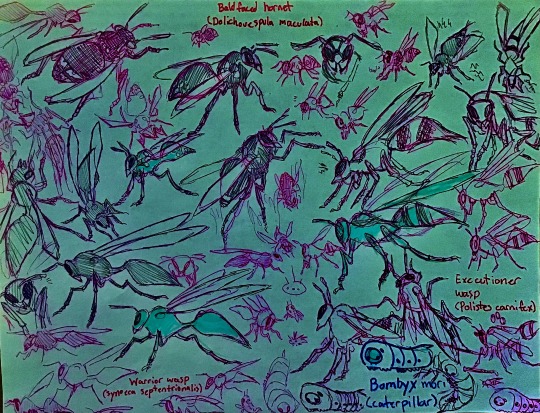
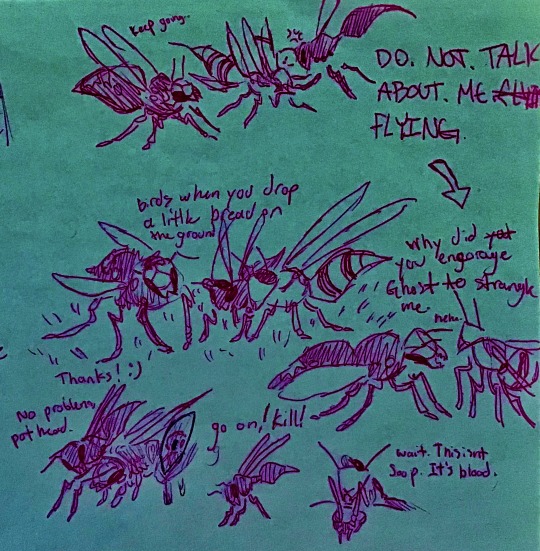

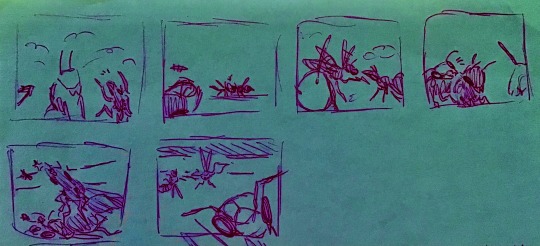
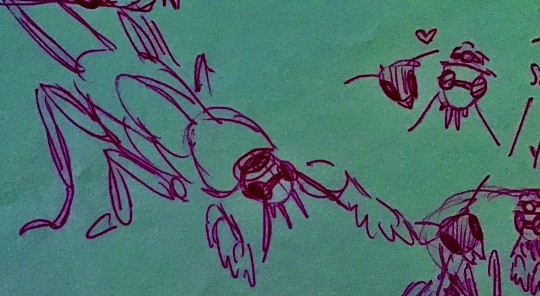

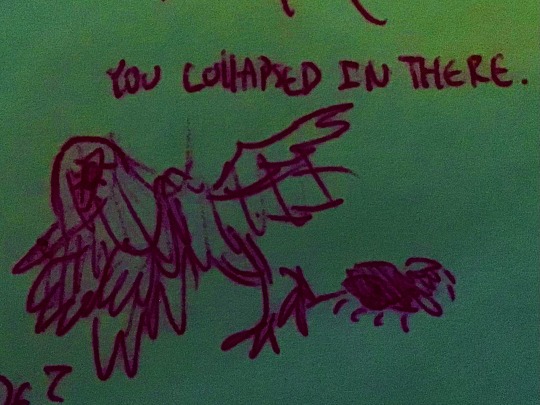



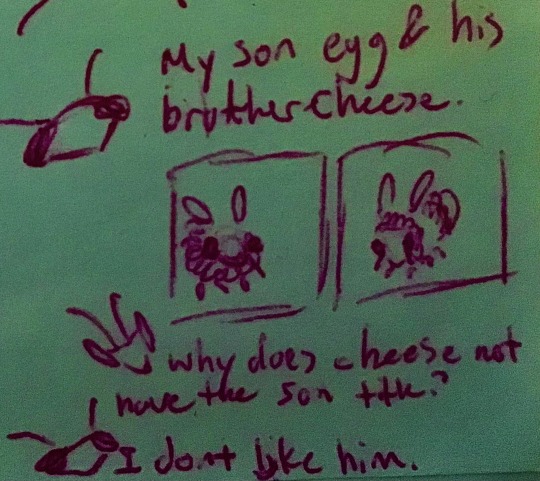
csrverse bug au rambles below
Batter- Executioner wasp (Polistes carnifex)
Ghost- Warrior wasp (Synoeca septentrionalis)
Bad- Bald-faced hornet (Dolichovespula maculata)
Borbo- Atala butterfly (Eumaeus atala)
Huaso- Mole cricket (Gryllotalpidae)
Flo- Florida dark scrub firefly (Lucidota luteicollis)
Par- Eastern pondhawk dragonfly (Erythemis simplicicollis)
Reinzei- Diabolical ironclad beetle (Phloeodes diabolicus)
Carbine- Prickly stick insect (Acanthoxyla prasina)
Mida- Himalayan giant honey bee (Apis laboriosa)
Lepi- Rice paper butterfly (Idea leuconoe)
Mors- Deaths head hawkmoth (Acherontia atropos)
(Black batter- Red-tailed bumblebee (Bombus lapidarus)
White batter- White-tailed bumblebee (Bombus lucorum)
Boxxedman- Thai boxer mantis (Acromantis gestri)
Daisy- Orchid mantis (Hymenopus coronatus)
Ballman- Eighty-eight butterfly (Diaethria anna)
Magenta ninja- Pink toe tarantula (Avicularia avicularia)
ive got a list of reasons for why these guys are who they are, i'll prob share it later once its better ٩(๑❛ᴗ❛๑)۶
the designs are all subject to change, these were just getting the idea on paper
#off game#bxe#bx execute#csr#continue stop rise#csrverse#bug#bug au#tw bug#ref#im not tagging everyone here#insects#tw insects#this is mostly bxe ill make a seperate post for the remaining csr guysss#:3#scotcharts
25 notes
·
View notes
Photo

カナメモチ(アカメモチ)の花にニホンミツバチ(左)とセイヨウミツバチ(右)が来ていた。このツーショットはめったに撮れないのでうれしい(4月18日)
#Apis cerana japonica#Apis mellifera#Photinia glabra#eastern honey bee#Asiatic honey bee#Asian honey bee#Pszczoła wschodnia#western honey bee#European honey bee#Pszczoła miodna#Japanese photini#bee#pszczoła#insects#owady#flowers#kwiaty#japan
6 notes
·
View notes
Text
Annual reminder that the bees that need help are native bees, not honey bees. Honey bees are both non-native to the Americas and they do compete with native bees. On top of that, they can also spread diseases to native bees (along with commercially raised bumble bees).
Bumble bees are one of the groups of native bees that are struggling. Bumble bees tend to be generalists, live in small colonies that restart from a single queen each year, and are excellent pollinators.
How to help/things to tell city hall:
Bumble bees are generalists and need pollen and nectar sources both early and late in the year. Finding native plants that fill these bloom times is great, but planting carefully considered nonnative, pollinator-friendly bloomers is an additional option.
Habitat fragmentation and loss is one of the biggest problems facing bumblebees, so replanting areas with blooming plants can make a huge difference. Think about if all government building grounds were intentionally planted to support bumblebees and other native bee species? What if we changed the code so corporate, park, apartment, and college campus landscaping had to contain a certain amount of native & pollinator friendly species?
Climate change is changing bloom time, so planting a diversity of native, near native, and non-native but non-invasive plants may be a good strategy, especially when focusing on very early and late bloomers.
Pesticides have also damaged native bee populations, so finding strategies to reduce or eliminate pesticide use is an important step.
The tips above are specifically for native bumble bees. There are a huge number of native bees, and while bumble bees are generalists, not all of the native bees are. Unfortunately, this is a fairly understudied area, but they are obviously more vulnerable than generalist species. One important thing you can do for specialist native bees is to look up the plants they depend on, and grow those that are native to your area (and encourage others and larger land owners to do the same. They also need nesting sites, so keep that in mind while developing your garden plan.
Here is the best source I've found for finding specialist bees and their plants: https://jarrodfowler.com/pollen_specialist.html If someone has a better one, please share.
If you click through you can find lists for Western, Central, and Eastern US specialist bees. Some are more specialist than others, and some do in fact use dandelions.
147 notes
·
View notes
Text

Hello everyone! This is going to be a bit of a big update this weekend, and probably not the only one you'll see over the course of a few days, but it's twelve thirty in the morning and I need to sleep. I have gone insane again. ✨This is nothing new.
I think the first and most important thing I want to iterate in this update is that I have broadened the scope of who can submit and what Communities I will be accepting for the Compendium going forward. Though consent and owner-approval is still at the forefront of my mind, I have to be conscientious of my own work-load and the health of the project (but mostly the former) when it comes to sourcing Communities. To that end, I want to note the following update on the Compendium itself.
UPDATE 7/26/24: After a bit of introspection regarding my own time commitments, limitations around submissions and the Compendium in general, I have changed my stance around server/community-owner requirements in regards to categorisation and consent. While owner/moderation-approval is still at the forefront of my considerations, it is far better for my limited time (and the Compendium’s health) to operate under the assumption that a publicly accessible site/discord/carrd etc. indicates endorsement for it to feature here. To that end, I am broadening the scope of who can submit and what I include. If you know of a community, regardless of if you are the owner or moderator, I encourage you to submit it.
Or, putting it even more succinctly:

You can always submit via the attached google form, via dms or on The SEAFLOOR Discord. I've made some other changes to the Compendium, but I'll note them further down.
I'm hoping this change, while creating a larger workload for me now, will assist in cutting down my overall stressors later down the line.
But, without further adieu, the following communities have been added to Sea's Community Compendium for XIV Creatives. ⛵
COMMUNITY FOCUSED / EVENT SPACES
Aethercon — An in-game convention for Final Fantasy XIV! Created by fans, for fans.
Where the Sun Guides — A new community of writers, artists and roleplayers interested in open-world RP in the region of Shaaloani!
Tuliyollal Community Server — A community focused on facilitating RP in the new world, with an emphasis on the cultures found there!
Xaela Community Discord — Do you like roleplaying? Do you like lizards? Do you like the Azim Steppe? Do you like roleplaying lizards on the Azim Steppe? Then look no further! ᕙ XAELA ᕗ is a Steppe RP community based in Crystal & Dynamis that has been around since Shadowbringers.
Far Eastern Festivals — A Community created around Far Eastern Festivals; events with a focus on Doma, Kugane, Yanxia and more!
Kugane Night Market — A spiritual market where the supernatural and mortal may meet for trade.
Leynode Nine — A community focused around stories and roleplay within Solution Nine.
The Fury's Hallow — Within the High House districts of Ishgard lies a respite for weary adventurers, as well as those who wish to test each other in combat. Regardless of your endeavour, may the Fury bless your every step.
Honey Bee Venues — A nightclub. A lounge. A cafe. A cabaret. Honey Bee is all of those things and more but most of all, we're roleplayers looking to meet people as much as our guests are! We pride ourselves on interaction with a policy of never letting anyone be ignored, regardless of who they are or the character they play.
The Tipping Scales — An immersive role-playing fight club on FFXIV that welcomes all levels of experience. Kick ass, take names, make allies.
Mun-Tuy Beans — A hub for Shroud RP! What began quite a while ago as a Duskwight-focused community has grown to encompass any and all creative souls who love the Shroud — for its juicy lore and picturesque settings. Our members (and others!) regularly meet at Buscarron's Druthers every Tuesday evening, and sporadically during the week!
FFXIV Writers — A place for FFXIV fanfiction writers to share their work.
Steppe Ramen — Located on Mateus in Shirogane, Ward 6, Plot 7, Steppe Ramen serves up ramen dishes that fuse Hingan and Steppe flavors.
The New Morgue — Tavern & Fight Night RP venue.
I have tried to isolate communities and events I can see are active, but I have not personally vetted each and every one. Please let me know if you run into any issues.
MISC
Aetheryte Avoidance — Are you determined to never use an aetheryte a day in your life? Are you asking yourself “No, I like my aetherytes, but how would that work?” @snow-system-wol's guide will show you how!
Halcyonalkimos' Gpose Tutorial — Written by @halcyonalkimos, this guide shows you how you can use a friend or a minion to enhance your vanilla gposing!
Teleport Fee Chart — Compiled by DocTabasco on Reddit, this spreadsheet documents all the teleportation fees in the game up to Dawntrail. (Will contain zone spoilers)
CHANGELOG
To facilitate the change with events / community servers, I have placed Free Company servers into the same category as Friends/Casual. My reasoning behind this is that Free Companies have the capacity to be much smaller / intimate than events and communities, and likely will still require consent from their owners before being displayed on the Compendium. This may change if I find something that works better.
Added clarification around personal / single-character ads; namely, while they won't be shown on the Compendium, they are likely to be posted either on the Tumblr Community or Discord.
More information has been added re. the changes to submission and acceptance. Namely that resource / server / community owners can contact me for amendments or removal. Also clarification around some public communities requiring application processes.
The submission guidelines have been changed to reflect the above updates.
The google form has been updated.
SEAFLOOR has the addition of #community-drop to allow members to submit communities as well.
Removed disclaimers around Tumblr Communities due to updates with the beta. It is now up to community leaders to ensure their join links are correct.
SEAFLOOR
We're a Tumblr Community now! For people unfamiliar with the concept of Communities, I encourage you to check out the tumblr post by staff made about them here. However, copy/pasting what I have written in the Compendium, the Community functions as so:
SEAFLOOR (A FFXIV Community) is a Tumblr community whose duel-purpose focuses on my projects — the Compendium, question drives and screenshot events — whilst also reblogging member created works, resources (including events, commissions and looking for content/roleplay/free company posts), affirmations and other xiv-related content. If you are interested in supporting my projects without the social aspect of a Discord, I highly encourage you to join the Community. Everything hosted on the Discord will be cross-posted there; you will not miss out on anything. You can find the link to join the community here.
I'm hoping the Community will function as a member-curated dash, resource hub and visual diary for my projects and member created works. There are no hard feelings if you want to leave the Discord and only join the Community. Please do what makes you comfortable!

Want to submit? You can either fill out the google form here or send me an ask with the relevant information!
Still To Do:
Update Compendium suitability read more (will be done by the next changelog)
Create a new advertisement / submission drive.
Think about my life (and my choices).
#final fantasy xiv#ffxiv#ffxiv community#final fantasy xiv roleplay#ffxiv roleplay#。・゚゚・ — sea speaks#。・゚゚・ — sea's community compendium
27 notes
·
View notes
Text








I ended up dawdling a lot on my walk today. It was a perfect day for it.
#birds of tumblr#animal photography#wild animals#wildlife pictures#birds of north america#birdwatching#wild birds#wildlife photography#toronto#nature#chipmunk#eastern chipmunk#flower photography#bee#bumble bee#house sparrows#american goldfinch#western honey bee#squirrel#eastern grey squirrel#mallard#duck
15 notes
·
View notes
Text
Like many other fruit trees, most sweet cherry cultivars depend on cross-pollination to produce their fruit. This means that there need to be several different cultivars of sweet cherry trees in an orchard for the bees to transport pollen from one to another.
"Sweet cherry trees are usually planted in alternate rows of different cultivars. In some cases, you can put different cultivars in the same row, but this can make the harvesting logistics tricky. In other words, the bees have to fly from one row of trees to the next to ensure that the trees set fruit," says Julia Osterman, a biologist at the University of Gothenburg and lead author of the study.
The paper, "Mason bees and honey bees synergistically enhance fruit set in sweet cherry orchards", has been published in the journal Ecology and Evolution.
Working with German researcher colleagues at Martin Luther University Halle-Wittenberg, Julia Osterman found that if trees were pollinated by more than one bee species, they produced more cherries. The researchers observed bees in a total of 17 cherry orchards in eastern Germany. Some growers used honey bees in hives as pollinators, while others used wild mason bees. Some orchards used both species to different extents. The researchers noticed a synergy effect in those orchards in which both species of bee were present.
Continue Reading
91 notes
·
View notes